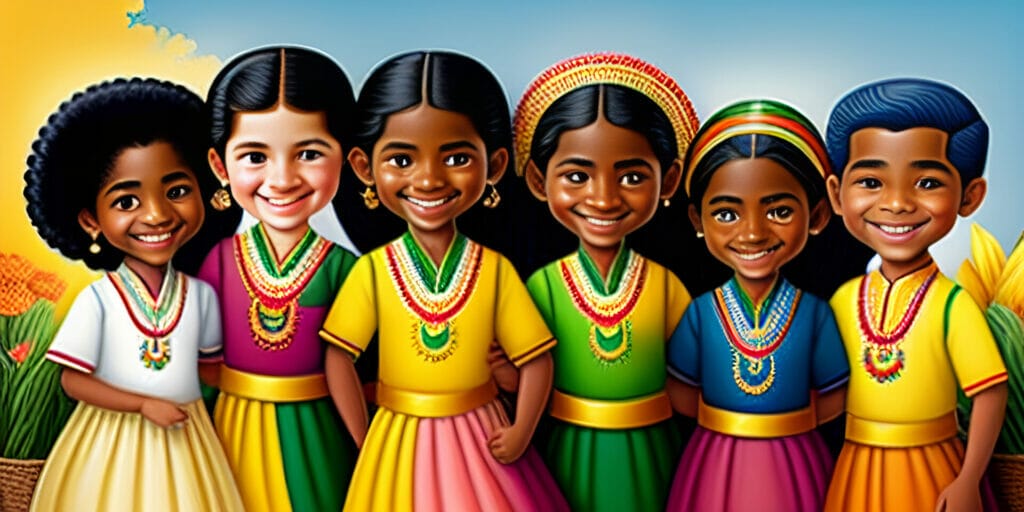Learning to embrace cultural diversity in the classroom is an essential part of creating a well-rounded learning environment. By celebrating cultural differences, teachers can help foster respect for others, enrich the classroom experience, and create a more positive learning environment. This article will provide educators with the tools and resources they need to create a more inclusive classroom. We will discuss how to introduce cultural diversity in the classroom, how to create a culturally responsive learning environment, and how to engage young learners in meaningful conversations about cultural differences.

In addition, we will explore how to address prejudice and discrimination within the classroom, how to create a safe space for all students to learn, and how to use cultural diversity to enhance the learning experience. By the end of this post, educators will have the skills and strategies they need to create a classroom that celebrates and embraces cultural diversity.
Introduce students to different cultures through literature and media
Introducing students to different cultures through literature and media is an effective way for teachers to celebrate cultural differences in the classroom. By exposing students to literature and media from a variety of cultural backgrounds, teachers can help students learn more about the world and the people in it. Through constant exposure to different cultures, students can increase their understanding of their own cultural heritage, as well as the different cultural heritages of their classmates. By introducing literature and media from different cultures into the classroom, teachers can help students gain a better understanding of diverse cultures and appreciate the unique beauty and value of each culture.
Create opportunities for students to share their own cultural backgrounds
A key part of teaching kids to embrace cultural diversity is creating opportunities for students to share their own cultural backgrounds. Teachers can help facilitate this by encouraging discussions about different cultures and how those cultures are celebrated and viewed. As part of the discussion, teachers can ask students to share the cultural backgrounds of their families, friends and neighbors. This will help students learn more about different cultures and help them to become more open-minded and tolerant of different cultures and backgrounds. Additionally, teachers should foster a classroom environment where students feel safe and accepted. This will help create an atmosphere where students feel comfortable sharing their cultural backgrounds and can learn from the experiences of their peers.
Allow students to celebrate holidays and customs from different backgrounds
As a teacher, it is important to help students learn to embrace cultural diversity in the classroom. One important way to do this is to allow students to celebrate holidays and customs from different backgrounds and cultures. This will help students learn about different cultures and gain an appreciation for the variety of backgrounds represented in the classroom. It also provides an opportunity for students to express themselves and their cultural backgrounds and to share their traditions with their classmates. When teachers incorporate holidays and customs from different cultures into the classroom, they create an atmosphere of acceptance and understanding and help students feel connected to the larger world.
Encourage dialogue between students of different backgrounds
As a teacher, it is important to encourage dialogue between students of different backgrounds in order to help them learn to embrace cultural diversity. This can be done by facilitating conversations between students of different cultures and backgrounds, as well as by helping them to build respect and understanding for each other’s cultural differences. By actively engaging in conversations about their own and other cultures, students can gain a better understanding of the world around them. In addition, having conversations about different cultures can help students to develop the ability to think critically about the cultural values that exist in our society. As a teacher, it is important to provide a safe and supportive environment in which students can openly discuss their cultural backgrounds and learn from each other.
Promote understanding and respect for people of different cultures in the classroom
As a teacher, it is your responsibility to create a learning environment that promotes understanding and respect for different cultures. By celebrating cultural differences in the classroom, you can help students learn to respect each other’s cultural background. This can be done through encouraging classroom discussions, introducing different cultures and perspectives, and inclusive teaching practices. It’s also important to create a safe space for students to ask questions and talk openly about their own cultural backgrounds in order to further their understanding of different cultures. Through cultural diversity in the classroom, you can help students discover new perspectives, gain a deeper understanding of themselves and others, and develop empathy.
In conclusion, teaching children to embrace cultural diversity can be a powerful way of encouraging understanding and empathy towards others. By introducing children to different cultures, languages, and customs, we can help them build bridges and cultivate an appreciation for the vastness of human experiences. Through celebrating cultural differences, we can foster a more inclusive and tolerant society for everyone.


